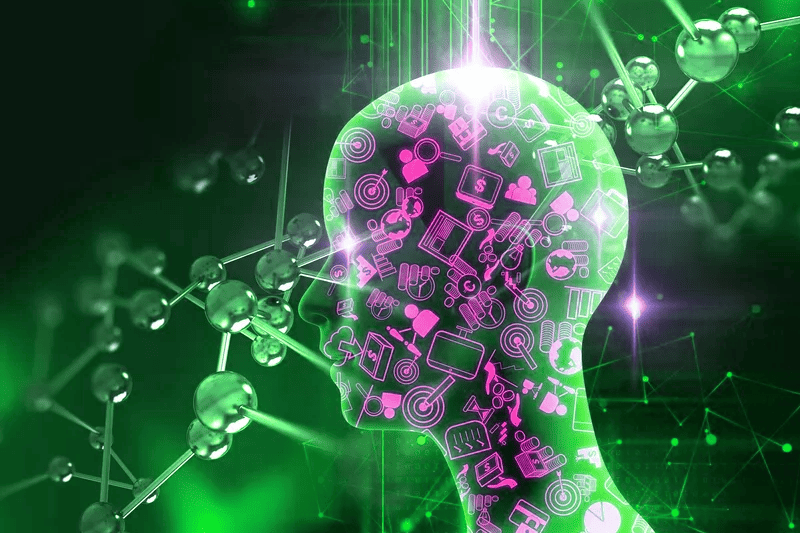Generative AI creates fresh content, while predictive AI uses algorithms to identify promising relationships. But as AI advances, the distinction between the two is likely to blur.
Generative AI is a new form of artificial intelligence that generates content including text, images, videos, and music. Generative AI uses algorithms to analyze patterns in data sets to then imitate the style or structure to reproduce a wide range of content.
Predictive AI is also a type of artificial intelligence. Unlike generative AI, predictive AI uses statistical algorithms to analyze data and make predictions about future events. It is sometimes also referred to as predictive analytics and sometimes more broadly as machine learning.
Let’s look at generative and predictive AI, look at their application scenarios, and compare these two powerful forms of AI.
Generative AI vs. predictive AI
Both generative and predictive AI are based on ML. However, generative AI turns ML input into content, while predictive AI uses ML in an attempt to determine the future and prevent bad outcomes by using data to identify early signs.
Among the key differences between generative and predictive AI are:
Creativity Generative AI is creative and creates things that have never existed before. Predictive AI lacks the content creation element.
Predicting the future — Predictive AI involves using historical and current data to identify patterns and extrapolate potential futures. Generative AI also identifies patterns, but combines them into new and unique forms.
Various algorithms Generative AI uses complex algorithms and deep learning to create new content based on the data it is trained on. Predictive AI typically relies on statistical algorithms and ML to analyze data and make predictions.
Both generative and predictive AI use AI algorithms to produce results. The difference comes in how they are used. Generative AI usually finds its place in creative fields such as art, music and fashion. Predictive AI is more common in finance, healthcare and marketing – although there is a lot of overlap between them.
Now let’s take a closer look at both generative and predictive AI.
What is generative AI?
The functionality of generative AI is to create content. It combines algorithms and deep learning neural network techniques to create content based on patterns it observes in other content.
Although the output of generative AI is classified as original material, it actually uses ML and other AI techniques based on the earlier work of other people—this is the main criticism of generative AI. This new AI technology takes massive repositories of content and applies that information to mimic human creativity.
Generative AI systems use standard ML techniques as part of the creative process. Generative AI can do things like analyze all the works of Dickens, Rollins, or Hemingway and create an original novel that seeks to imitate their style and writing.
In this way, generative AI goes beyond traditional ML. Using various forms of ML systems, models, algorithms and neural networks, generative AI offers technological insight into the world of creativity.
Generative AI Use Cases
By creating fresh content, generative AI is used to complement, but not replace, the work of writers, graphic designers, artists and musicians. In business, it is especially useful in areas such as describing products, variations on existing designs, or helping an artist explore different concepts. Among the most common uses are:
Text — generation of plausible texts on various topics. Drafting business letters, drafting articles and preparing annual reports.
Images — converting text prompts into realistic images, creating new stories and modeling new paintings.
Video — automatic production of video content from text and arrangement of short videos based on available images.
Music – compiling new musical content by analyzing the music catalog and creating a new composition.
Product Design — creating several possible product design variations based on data from previous versions, which can be taken into account in the new version.
Personalization — Offering a personalized user experience, such as making product recommendations, tailoring how to use them, and presenting content that exactly matches their preferences.
What is predictive AI?
Predictive AI examines historical data, identifies patterns, and makes predictions for the future that can better inform business decisions. Its value comes from its ability to detect anomalies in data flow and extrapolate them to future results or behavior, improve business decisions by identifying customer purchasing propensity and upsell potential, and improve overall business results.
To a significant extent, predictive AI can inform management about future trends, opportunities, and threats. It can be used to recommend products, increase sales, improve customer service, and fine-tune inventory levels.
Predictive AI adds another dimension and greater precision to management processes. When used correctly, it increases the chances of success and positive business results, especially in the area of inventory management.
With accurate predictions and improved decision making, predictive AI can help organizations extract much more value from the data they collect and use it to gain a competitive advantage in business.
Predictive AI use cases
Predictive AI has many use cases. Among the most significant are financial forecasting, fraud detection, healthcare and marketing.
Financial services — improvement of financial forecasts. By drawing data from a broader data set and relating financial information to other forward-looking business data, forecasting accuracy can be significantly improved.
Fraud Detection by identifying abnormal behavior. In banking and e-commerce, this could be an unusual device, location, or request that doesn’t match a particular user’s normal behavior. For example, logging in from a suspicious IP address is an obvious red flag.
Healthcare — predicting disease outbreaks, identifying patients at increased risk and determining the most successful treatments.
Marketing — more precise determination of the most appropriate channels and messages for interaction with customers. Equipping marketers with the data they need to create effective campaigns for greater success.
As such, predictive AI has countless applications across a wide range of industries. If managers knew the future, they would always take appropriate steps to capitalize on how events unfold. Anything that increases the likelihood of knowing the future has high business value.
Conclusion
Both generative and predictive AI use algorithms to solve complex business and logistics problems.
Generative AI typically uses more complex models and algorithms than predictive AI, adding a creative element. Unlike predictive AI’s role in pattern recognition—where it draws conclusions and offers results and predictions—generative AI takes existing patterns and combines them to create new content.
As AI advances, the distinction between generative and predictive AI will likely become blurred. AI systems are emerging that seamlessly combine generative and predictive AI. Instead of using one set of algorithms to predict and another to create, advanced AI systems combine both and can produce both types of results. By combining algorithms that identify trends and promising relationships with algorithms that recombine these patterns into new creations, the value of AI will increase even more.
While there are certainly differences between generative AI and predictive AI, the differences are far from rigid. They contain similar elements. It is how they are used that leads to different results. As they evolve, both generative and predictive AI will play a role in changing the future.





